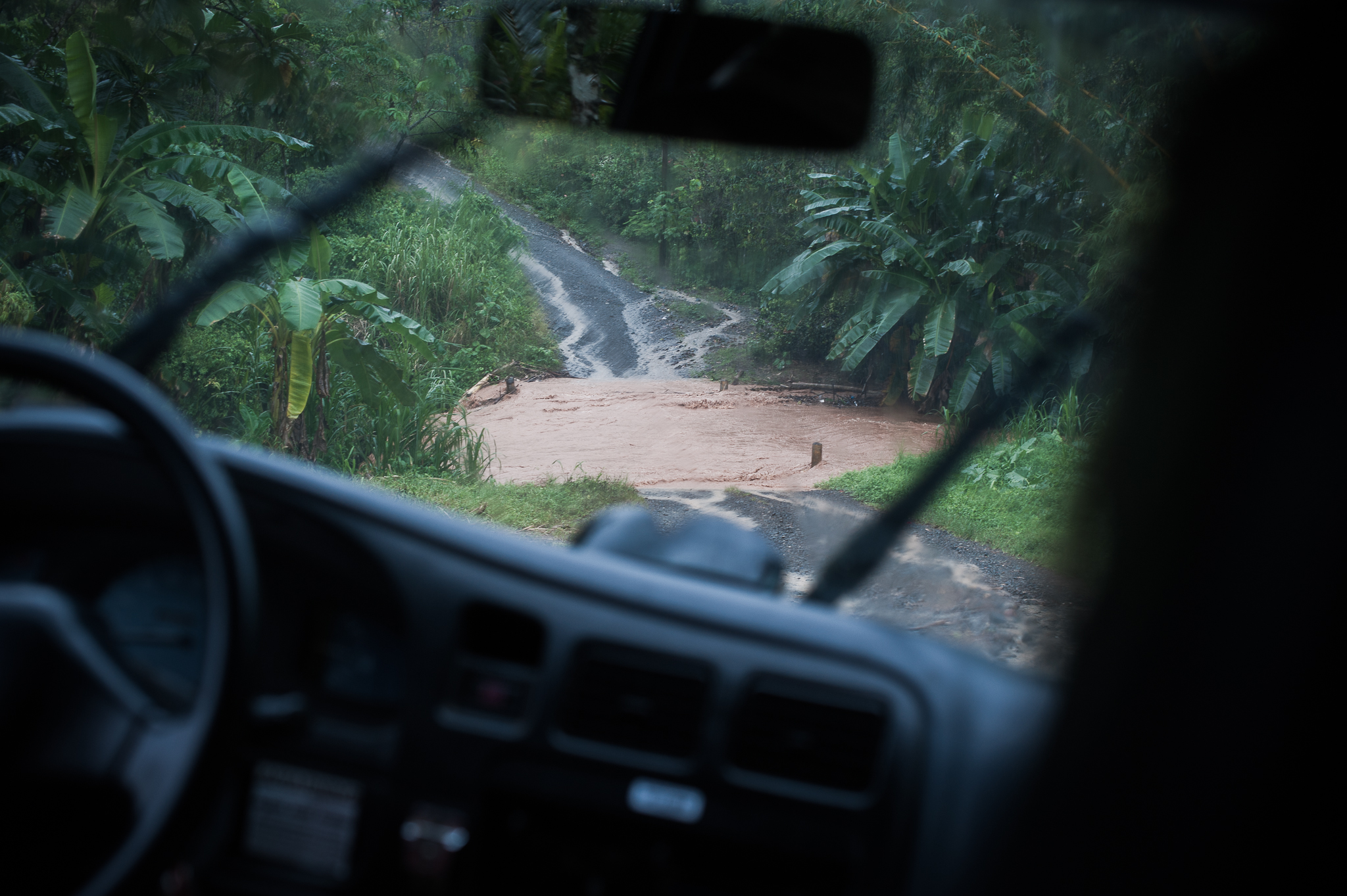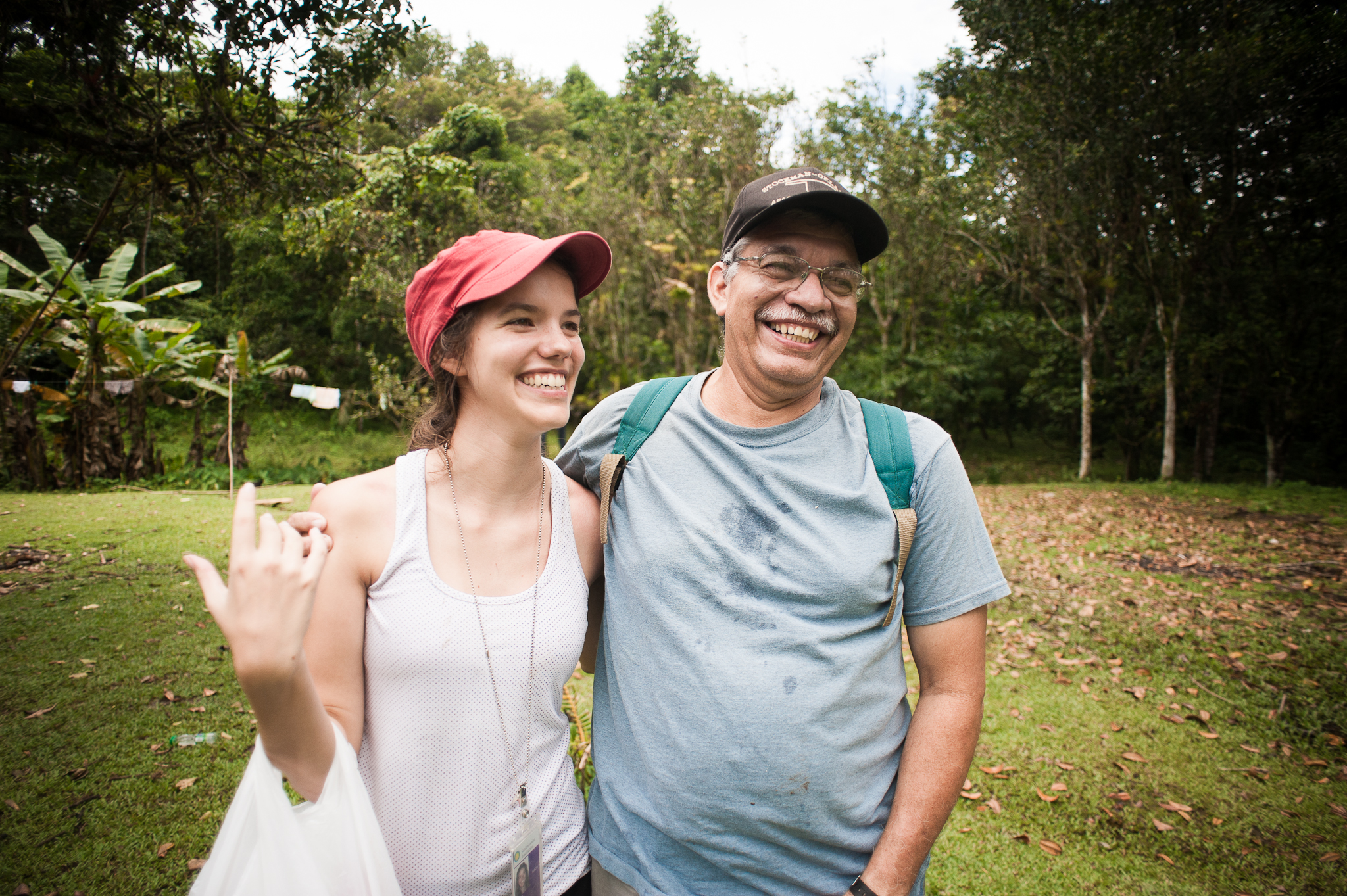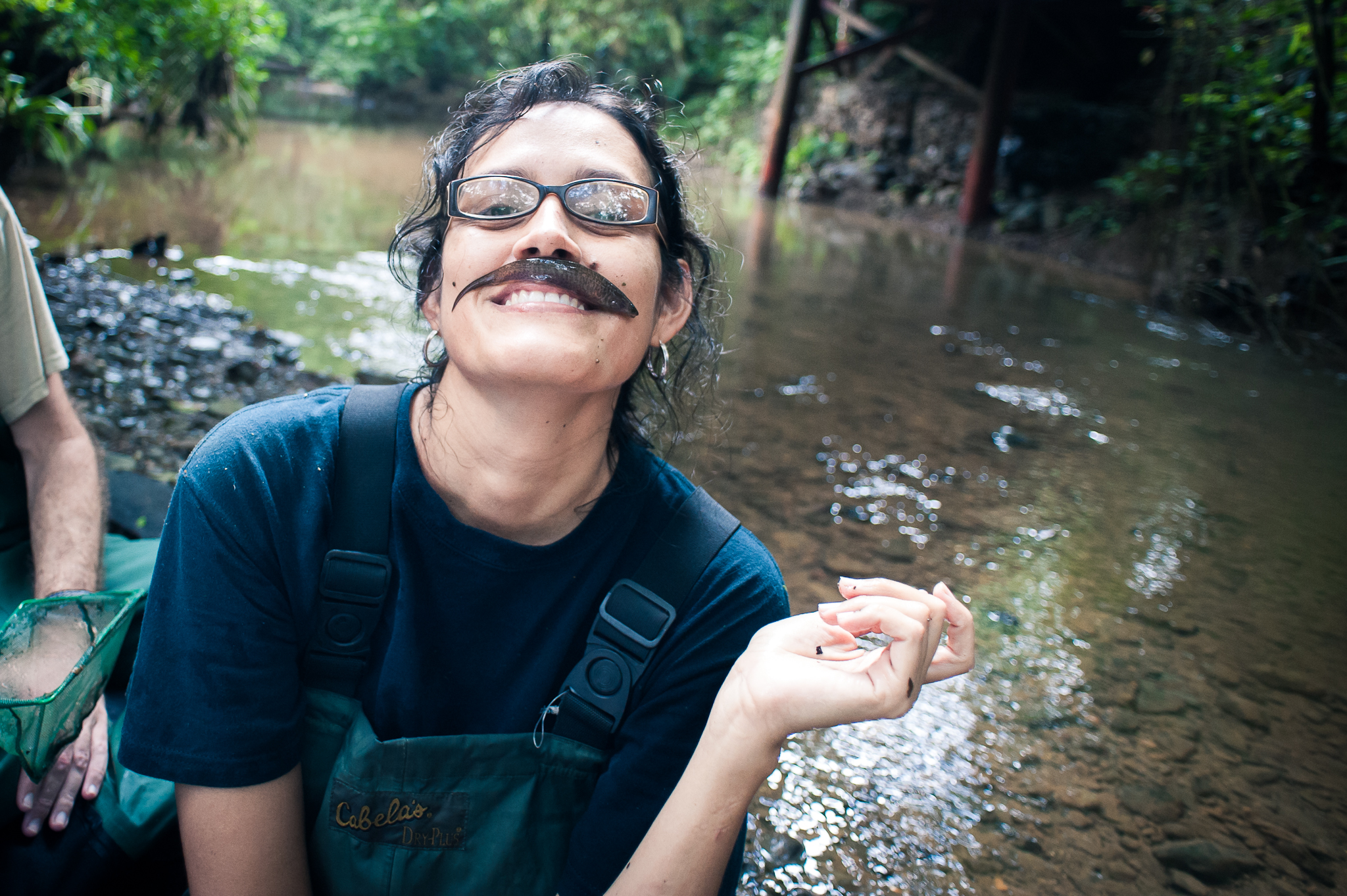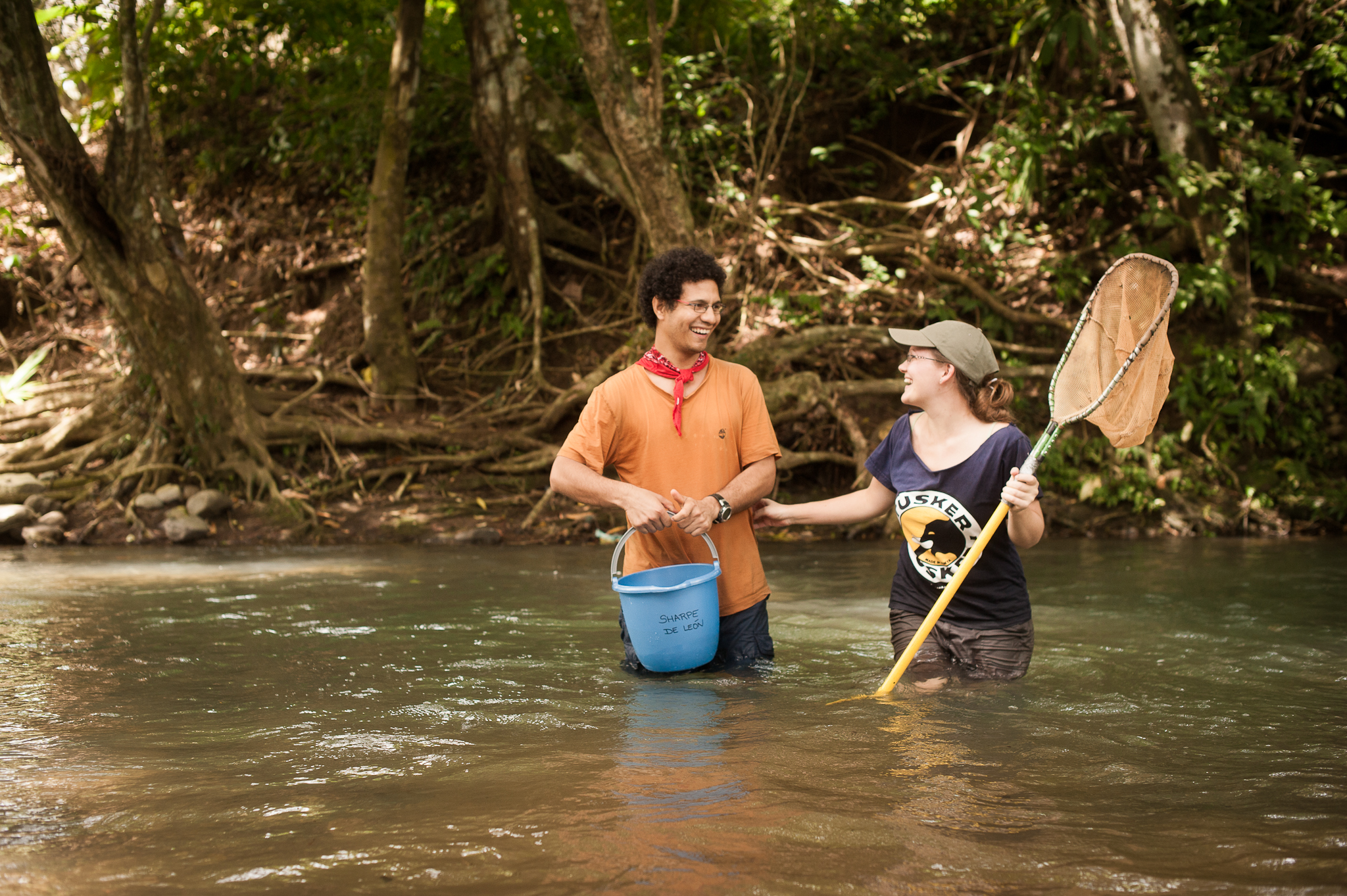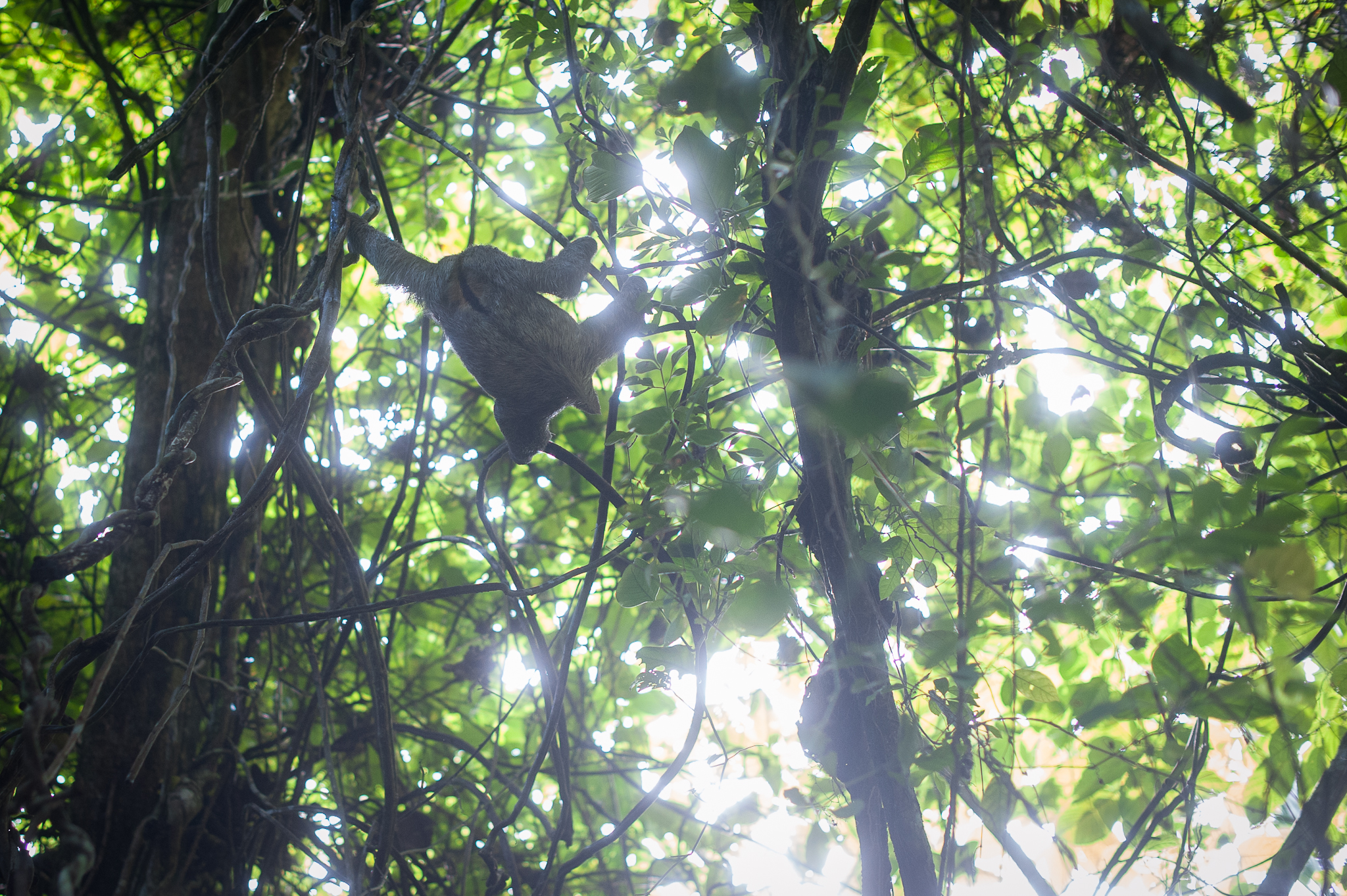Right now, I'm lying down in a hammock, sipping on ice coffee. In the forest next to me, Black-capped Chickadees, American Goldfinches, and White-breasted Nuthatches are calling. By my side, a pair of binoculars just in case I see something cool, and my camera in case I see something crazy. After working in the lab every day for the past few months, I started getting desperate and wanted to go outdoors more. The Gault Nature Reserve is a great spot to go to get your outdoors fix and still stay close to Montreal. I contacted the staff and managed to get a sweet deal: I'd stay in the chalets with all the researchers (which includes my girlfriend Claudia) in exchange for pictures they could use for promotional purposes. So now here I am, enjoying the outdoors like a true bio nerd.
I started out with Jorge (+ Lucia & Marisol) a.k.a the proud owner of the Ratmobile, a black rental car equipped with Radio Caliente. His work focuses on the expansion of Lyme disease in Quebec by tracking White-footed Mice, since they are hosts for the Black-legged Ticks which carry the disease. TéléQuébec also came one day to film the research, and long story short, I ended up filming some footage that they will be using on their show :D It's supposed to air some time in September.

Marisol, Jorge, Lucia & Professor Virginie Millien preparing their setup. Nikon D7000 + Tokina 12-24mm 4.0 @ 19mm, 1/100, f/4.0.

Jorge contemplating the meaning of life. Nikon D7000 + Nikon 70-200mm 2.8 @ 98mm, 1/160, f/2.8.

Marisol weighing the mouse. Nikon D7000 + Nikon 50mm 1.4, 1/100, f/2.8.

Mouse team putting the radio collar on the anesthetized mouse. Nikon D7000 + Nikon 50mm 1.4, 1/100, f/2.8.

Lucia preparing the telemetry equipment for tracking the radio collars. Nikon D7000 + Nikon 70-200mm 2.8 @ 80mm, 1/125, f/2.8.

White-footed Mouse with radio collar. Poor guy. Nikon D7000 + Nikon 105mm 2.8, 1/80, f/3.2.
Next, I went with Kyle (+ Sarah & Julien) who studies the relationship between the diversity of bees and the pollination services they provide, and how this is influenced by the surrounding landscape. I was lucky that their sampling site was in one of the prettiest spots on the mountain: a huge field of golden rods filled with blackberry patches you can pick on. As you walk through the goldenrods you just hear buzzing around your head from all the bees. They were scanning the flowers and catching the bees in nets, putting them in vials. When I ask the number of bee stings he's accumulated over the years working on this project he says "Probably about 30 or so."

Bumblebee doing bumblebee things. Nikon D7000 + Nikon 105mm 2.8, 1/1600, f/3.2.

Kyle sampling in a field of goldenrods. Nikon D7000 + Nikon 70-200mm 2.8 @ 120mm, 1/640, f/2.8.

Sarah investigating potential catch. Nikon D7000 + Nikon 70-200mm 2.8 @ 120mm, 1/640, f/2.8.

Julien recording the results of sampling. Nikon D7000 + Nikon 50mm 1.4, 1/1250, f/2.8.
If you don't like bees, maybe you'd like Carly's (+ Claudia & Katriina) work on the role of forest fragmentation on carbon storage and biodiversity. But like Claudia's thumb will attest, trees can still sting you. I learned from that day that 1) mosquitoes don't care whether you have some OFF on you or not, and 2) when you find branches that look vaguely like antlers, the obvious thing to do is to take a break from science and prepare for a death match.

Pretty forest! Nikon D7000 + Tokina 12-24mm f/4.0 @ 12mm, 1/100, f/4.0.

Carly tree hugger. Nikon D7000 + Nikon 50mm 1.4, 1/160, f/2.2.

Carly measuring DBH. Nikon D7000 + Nikon 50mm 1.4, 1/160, f/2.2.

Claudia taking some canopy pictures. Nikon D7000 + Nikon 70-200mm 2.8 @ 116mm, 1/160, f/2.8.

Katriina holding up a soil core. Nikon D7000 + Nikon 50mm 1.4, /50, f/3.2.

The collected soil samples are then dried out on coffee filters. Nikon D7000 + 50mm 1.4, 1/200, f/2.8 + SB-600 Bounced off the wall.

They had 2 full tables of soils. Nikon D7000 + 50mm 1.4, 1/200, f/2.8 + SB-600 Bounced off the wall.

Katriina and Carly fight to the death in plot 3. Nikon D7000 + Nikon 50mm, 1/180, f/3.5.
Finally, I went with Dory (+ Thomas & Camille) who is studying the effects of forest fragmentation on insect herbivory. The field work involves climbing up trees, collecting insects with cool weird traps, whacking branches, and sucking up insects.

Dory putting a harness on and climbing up a tree like a pro. 1) Nikon D7000 + Nikon 50mm 1.4, 1/60, f/2.0; 2) Nikon D7000 + Nikon 18-70mm @ 55mm, 1/40, f/4.5.

Trap 1: Burlap traps. They caught 72 catterpillars in a single one of these once. The burlap coziness is irresistible apparently, and catterpillars just crawl up to cuddle. Nikon D7000 + Nikon 50mm 1.4, 1/200, f/1.8.

Trap 2: Lindgren trap. It has 7 funnels that leading into a container of ethanol where the insects accumulate over time. Here Dory is about to send the trap down for the others to collect their sample. Nikon D7000 + Nikon 70-200mm 2.8, 1/160, f/2.8.

Trap 3. Malaise trap. This tent-like trap is mostly for flying insects. They fly right into the walls and similarly to the Lindgren trap, they are funnelled into a container of ethanol. Having to empty these bottles out really stinks apparently. Nikon D7000 + Nikon 70-200mm 2.8 @ 90mm, 1/250, f/2.8.

Thomas climbing up a tree. Little did he know he was about to get stuck there for 10 minutes. Nikon D7000 + Nikon 70-200mm @ 70mm, 1/125, f/2.8.

Here Thomas is whacking branches with a stick and collecting the falling insects on a white sheet. He then proceeds to suck up the insects in the vial. Nikon D7000 + 50mm 1.4, 1/200, f/1.8.

Camille collecting leaf samples. Out of focus Dory scratching mosquito bites. Nikon D7000 + 50mm 1.4, 1/200, f/1.8.
And what was great is that in between going out with the different research teams, I spend my days hiking on the mountain.

This is an abandoned apple orchard. I saw a deer last time I came here but my stupid self didn't have my camera ready. He was intimidated by my predatorness and ran away. Nikon D7000 + Tokina 12-24mm f/4.0 @ 12mm, 1/160, f/5.6.

Little red squirrel enjoying the view of the town of Mont St-Hilaire. Nikon D7000 + 70-200mm 2.8 @ 200mm, 1/2500, f/1.8.
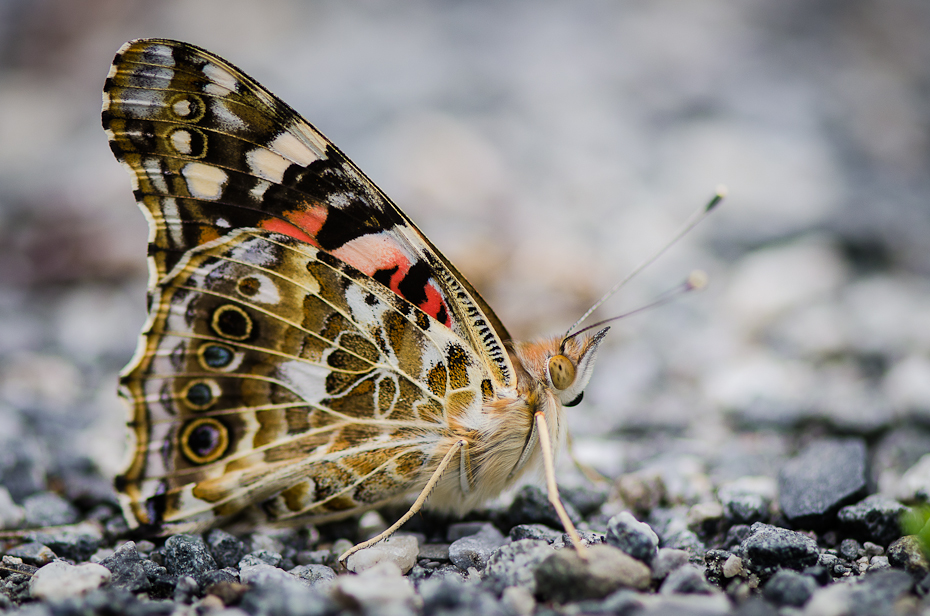
A Painted Lady (Vanessa cardui). Remember for macro shots, think of the angle in which you shoot. If I shot this just a bit higher, the background of the shot would have been all in focus. Here, I was really lying on the ground to get the background far away from the butterfly and become out of focus. Nikon D7000 + Nikon 105mm 2.8, 1/320, f/3.5.
Birding, good food, Claudia, marshmallows, cool people and hiking; this ended up being the perfect break from the lab.
I had a blast doing research and fieldwork photography and I'd love to do some more. I think it's important for scientists and grad students to have great visual aids to support their posters and presentations to ultimately communicate their science more clearly. If you're a part of a research team that does research in the field, I'd love to offer my photography services to you. Check out my explorations portfolio for other related work. I want to hear from you!





